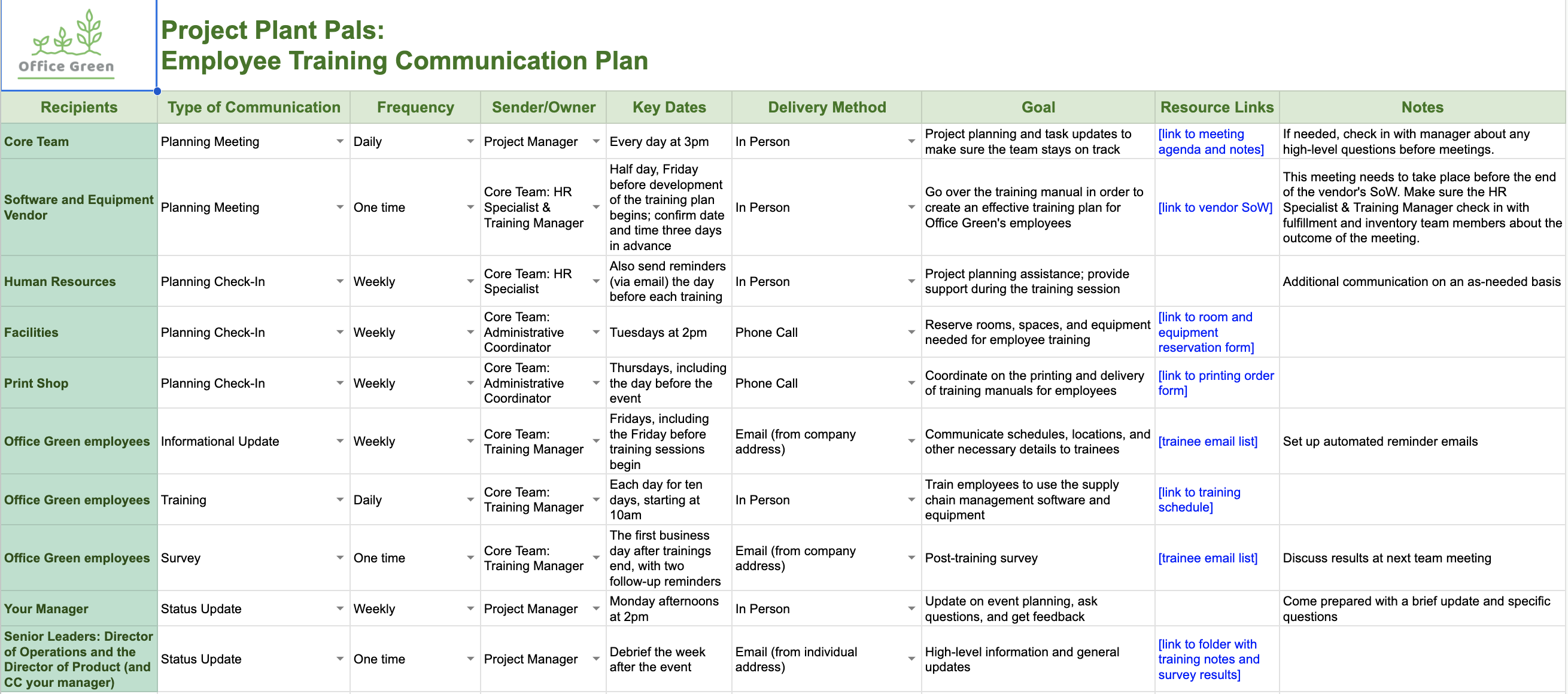Organizing communication and documentation
Elements of a simple communication plan and how to draft and manage one, why documentation helps create project team visibility and accountability, how to organize documents in one central place, and how to prepare for a job search by documenting experience and highlighting transferable skills.
1. Recognize and understand individual differences
You can encourage open, inclusive communication by:
- Not making assumptions about your audience's backgrounds, identities, or experiences.
- Being mindful of your own biases.
- Using appropriate, professional, and neutral language.
- Including, respecting, and being curious about diverse points of view.
Understand each team member's background, experiences, perspectives, and biases—as well as your own—to communicate effectively.
2. Brainstorm and craft the appropriate message
Communicate the right message by thinking about your intended audience. With whom are you communicating? In your communications, always be clear about your reasons for reaching out:
What channels can your audience use to contact you or the team?
- Are you conveying information?
- Are you asking for input?
- Are you clarifying an issue?
- Are you resolving a problem?
Some team members may require detailed information, while others may only need an overview of the situation. No matter your audience, you should be sure to:
- Identify the purpose of the message
- State the information or request clearly and concisely
- Stay on topic
3. Deliver your message
Think about which methods are available and appropriate for communicating with various members of your team, whether that is in person, in a video conference, over the phone, via email, or in a meeting. Choosing the right method is especially important if you have team members or stakeholders in different regions and time zones.
Be sure to:
- Avoid including any sensitive or potentially private information.
- Assume everyone at the company will receive the communication.
4. Obtain feedback and incorporate that feedback going forward Communication doesn't end when you deliver your message, so be sure to follow up with your audience by:
- Checking to make sure your message was clear.
- Asking them for feedback.
- Encouraging open communication.
- Responding to questions quickly.
Obtain feedback from your audience to ensure that your message was received as you intended.
Tips for communication plan
- Project stakeholders: Have you created a RACI chart or stakeholder map of all your stakeholders? Who is your audience? Who will need to be informed at different points during the project life cycle?
- Communication frequency and method: When and how often should you check in with your stakeholders? What methods of communication do they prefer? How much detail does each stakeholder need?
- Goals: What is the goal of your communication? Do you need a response? Are you trying to encourage engagement or simply providing an update?
- Barriers: Are there any time zone limitations? Language barriers? Do some stakeholders require time to reply or respond (e.g., an executive)? Are there any privacy or internet access issues?
Check in with your audience about the effectiveness of your plan. Scheduling routine check-ins will help you understand what is and is not working so you can improve your plan.
 Evaluate where you may be over- or under-sharing information or missing stakeholders.
Evaluate where you may be over- or under-sharing information or missing stakeholders.
- Anonymous survey forms
- Polls or open feedback sessions during team meetings
- One-on-one conversations and check-ins with key stakeholders